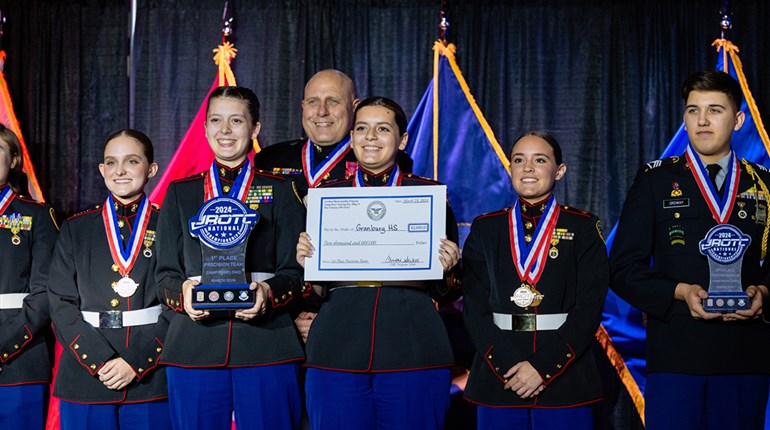
America's favorite platform, the AR-15, reigns supreme in many applications. From affordable target practice to home defense, there isn't much that cannot be done with this rifle. However, while Eugene Stoner got it right in 1959, the one thing that the AR-15 always lacked was range. The recent introduction of the Federal Premium 224 Valkyrie, reviewed here by Shooting Illustrated's Ammo editor, aimed at solving this shortcoming, so we decided to see what kind of capabilities could be had with this new round.
A number of cartridges have been designed with the idea of getting more effective range from an AR-15-sized cartridge. However, the most popular solution has always been to load a standard 5.56 NATO with a heavier bullet. The only problem with this solution was the limitations of 5.56 NATO case itself. While it can accept bullets up to 90 grains in weight, they often need to be seated so long that they cannot fit inside an AR-15 magazine. In addition to this, powder capacity is sacrificed to accommodate the long bullet, which reduces velocity. Reaching a speed where the round will stay stabilized past 800 yards is a challenge.
Up until recently, the only means to send a heavy .224-inch bullet was to either single-load or run it out of a bolt gun. This is where the 224 Valkyrie comes in. The .224-inch diameter bullet has always been readily available in a variety of configurations for a variety of tasks and is a favorite because of its low recoil, so many manufacturers were focused on making an AR-15-sized round to accommodate heavier bullets in this caliber. Federal Premium drove it home with the 224 Valkyrie at the 2018 SHOT Show, and a number of barrel manufacturers quickly started churning out barrels chambered in this overnight success.
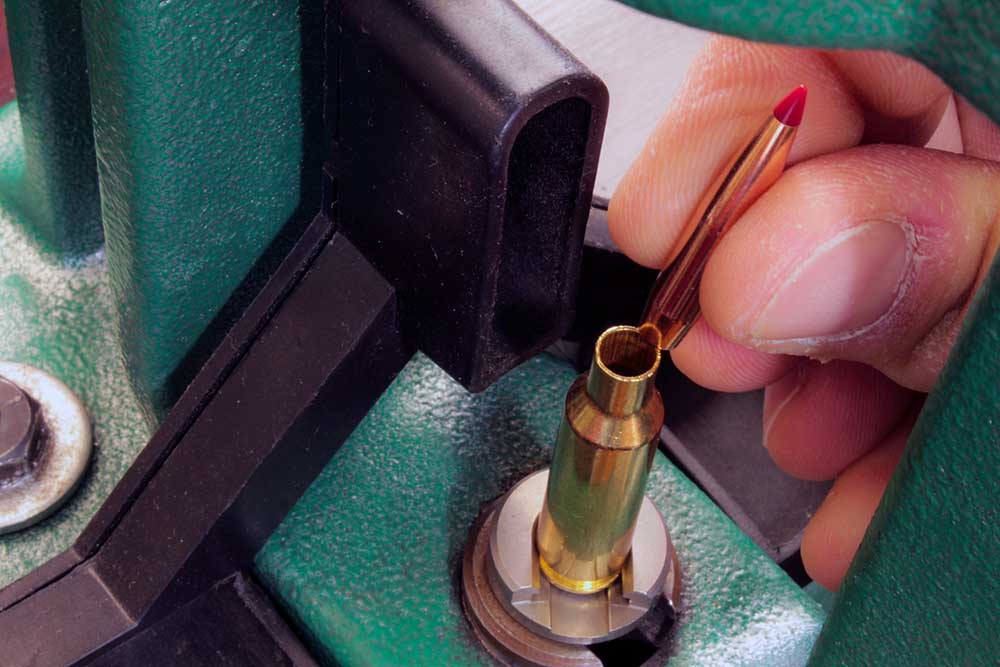
The idea was simple: Neck down a 6.8 SPC to accommodate the smaller diameter bullet, and you will have room for enough powder to push these babies up to 1,200 yards and beyond. Being that the case body is much wider in diameter, the powder column settles much lower now, allowing the bullet to be seated deep enough to function in a standard AR-15 magazine.
The result was a gun that shoots as soft as a 5.56 NATO, gets to the target quicker and has a better ballistics coefficient than most 6 mm and even 6.5 mm ELD projectiles!
The ammo junkie in me hears about this new cartridge and its factory loadings and immediately thinks "I can make this better." Over the years, I've always been able to fine-tune cartridges to run better than factory ammo, and I was certain this cartridge wouldn't be any different... or so I thought. I have been through the wringer on a few different load developments, but this one really had us thrown for a loop.
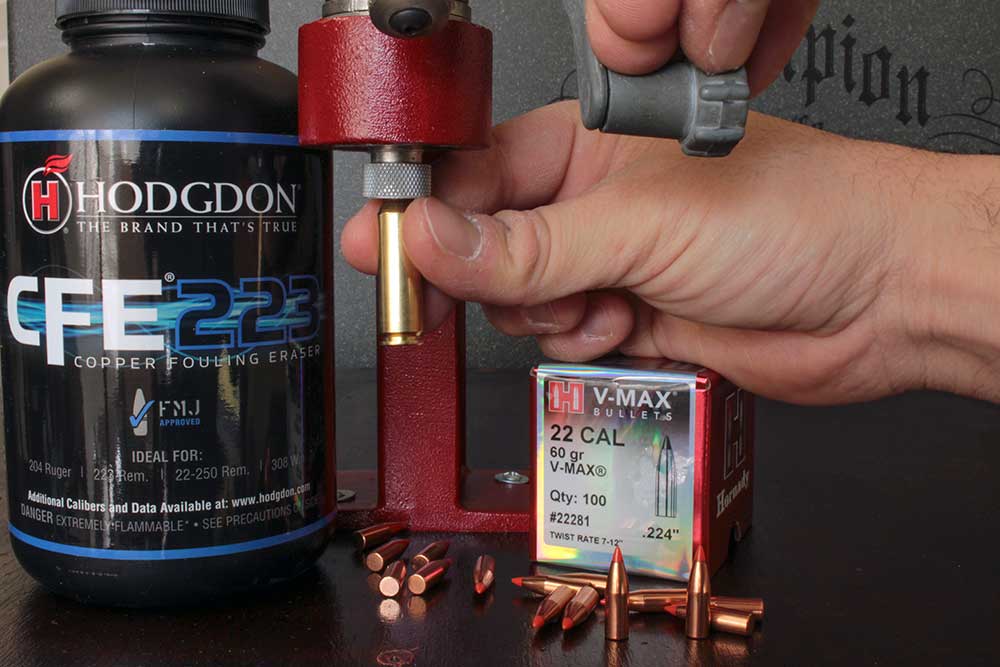
Starting our journey, we looked at what was already commercially available. Federal Premium initially offered 60-, 75-, and 90-grain offerings to cover a variety of hunting and target applications. With that knowledge, we decided to go with the bookends and build a heavy-for-caliber target round and a light-for-caliber varmint round.
For our project, we selected the Hornady 60-grain V-Max, as I have had amazing luck with this bullet in a standard 5.56 NATO cartridge. To this day, it is still my go-to service rifle loading for reduced course matches. For our heavy target round, the new Hornady 88-grain ELD MATCH bullet piqued my interest, and I was excited to have an opportunity to do some work with it.
We contacted Hornady for the projectiles and reached out to RCBS for a pair of these scarce dies. Federal was happy to provide us with the same brass that the company uses in its factory ammunition. This is available to consumers in 100-round bags. Weighing a sample, we found them to be exceptionally consistent with just a weight variance of +/- 1 grain from the median weight of 114 grains. We primed our cases with CCI BR-4 benchrest primers, and we were ready for the powder.
Hodgdon released its 2018 Annual Reloading Update Manual, and of course, the 224 Valkyrie was right on the cover. Looking it over, we found a dozen different powders that we can load with, and staring at me were two of my favorites. My first pick was IMR 8208, as I have always had good luck using it to push heavy .224-inch bullets down a barrel. This was the powder for our heavy target load. Also on the list was CFE 223.
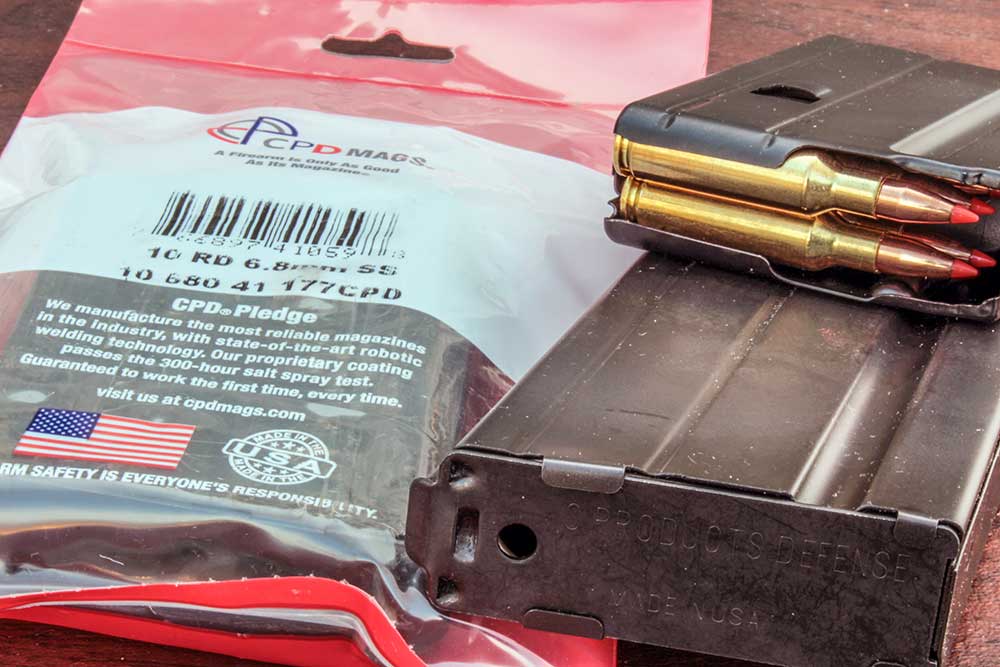
Those not familiar with this series of powders will be interested to know that it actually removes copper fouling as you shoot. With velocities north of 3,000 fps, this was a natural choice, as copper fouling is guaranteed at those speeds. I've had the pleasure of working with the 300 BLK CFE powder before and even had the opportunity to do a before-and-after comparison with a Lyman Products Borecam, and it was amazing how it actually keeps its promise.
Load development was relatively simple, as both of these powders have a narrow range between max and min charges. Loading every possible safe charge in three-grain increments only meant either 7 or 11 different loads for each powder/bullet combination.
Our first range day brought us some cold and damp weather typical of a Northeastern winter. Although chilly, we weren't discouraged, as the early hours brought calm to the usual windy conditions on this particular range. Our test rifle consisted of a basic 20-inch 1:7-inch twist barrel with an M-Lok free-float rail. To reduce shooter error, we installed a RISE Armament RA-535 APT match-grade trigger, which broke cleanly at just 3 pounds. We installed this drop-in trigger in minutes right at the bench and were just about ready to go.
We rested our build on a Champion V-Bag in the front and a Champion Wedge Bag in the rear. This setup is inherently more stable than a bipod, as it allows the gun to slide smoothly under recoil, and the wedge let us adjust elevation simply by sliding it in or out from the buttstock.
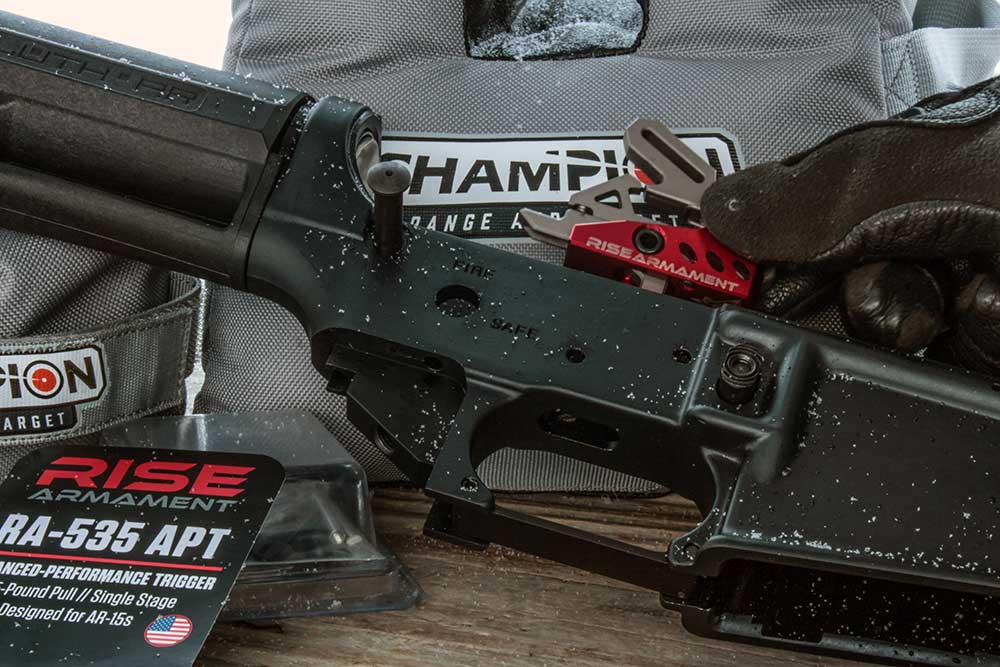
We began zeroing and immediately realized something was off. For the life of us, we couldn’t find a factory load that would stay inside of 3 MOA. Weather was good, optic was solid and previously tested on other firearms, shooters were both NRA-certified instructors, but still the gun wouldn’t perform.
Now I’ve had plenty of guns that simply could not achieve any reasonable accuracy with factory ammo, so it didn’t stop us from carrying on, and we continued.
We went through our loads with the 60-grain V-MAX loaded with CFE 223 and they were just a hair better than our average factory group, acceptable but certainly not handload-level accurate. At this point, Chris and I scratched our heads and sent the 88-grain loads downrange to see just how far the rabbit hole went. We never did figure out how big those groups were...because we couldn’t keep five shots on an 8.5x11-inch target.
Something was very wrong, so we packed up and did some investigation. Luckily, this was just a few days before SHOT Show 2019, where I would be immersed in a wealth of gun knowledge and industry information. Pounding the proverbial pavement, I heard from a number of sources that a bad batch of chamber reamers have made their way through the industry, leading to some aftermarket barrels being out-of-spec.
This sounded plausible to me and our targets certainly support that, especially since we used a budget upper receiver. Just a few weeks later, I found myself at the E.R. Shaw booth at the NRA Great American Outdoor Show, a company known for its world-class, bolt-action rifle barrels. I was pleased to learn the company just released its AR-15 barrels, and in the lineup was an 18.5-inch, helical-fluted 224 Valkyrie option. Graciously, the company supplied me with one for testing and I left with it that day. Round two, here we go.
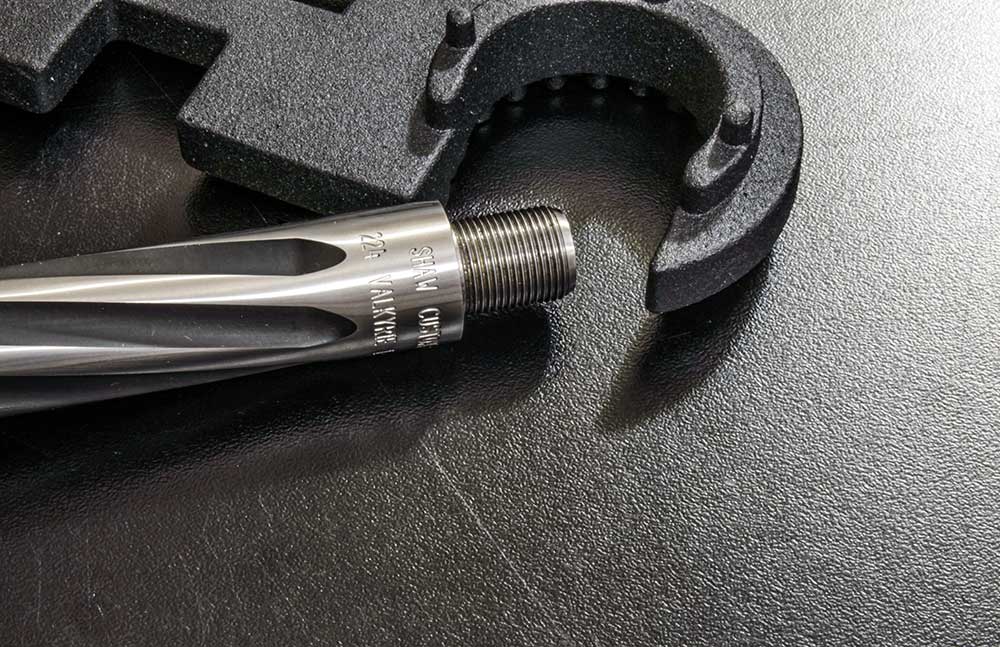
After a quick swap, we headed back to the range and duplicated our test parameters. Starting with the 60-grain V-Max loads, we fired our five-round groups and hit a node at 26.9 grains, giving us a group that measured just inside of an inch. Looks like we found the problem. Velocities on these were smoking, reaching 3,074 fps out of our relatively short 18.5-inch barrel. We obtained this information with a MagnetoSpeed chronograph, which has always provided consistent results in our testing.
Speed is important for this particular cartridge, as it plays a major role for this round's intended purpose. As a bullet passes through the air, it is dropping at a rate of 9.8 meters per second. The faster that bullet is moving, the more ground that will cover during this drop. A round that can cover more distance in less time will impact at a similar elevation over a wider range. In other words, range estimation becomes less critical, even when it comes to tiny targets like small steel plates or prairie dogs.
With a slower round that's dropping faster, 25 yards of error in range estimation could be the difference between a hit and a miss with a steeper, rainbow-style trajectory. Running the numbers through Hornady's mobile app, we were pleased to find that this loading would only experience 9.1 inches of drop between 200 and 300 yards. That’s still “minute of prairie dog” right where most shots are taken.
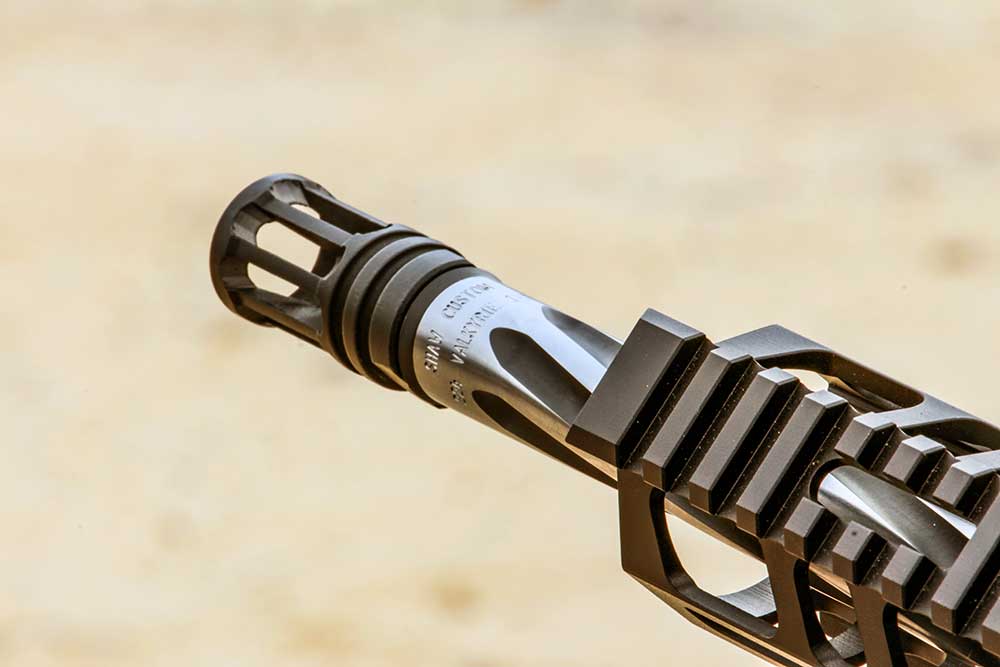
Moving on to the 88-grain ELD MATCH rounds, we decided to change from IMR 8208 to Hodgdon Varget. Although our original barrel was defective, we still felt that a 10+ MOA load need some sort of change, and we were hell-bent on making the 88-grain rounds fly. Concluding our test-firing, we found a node at 23.4 grains that produced an adequate group measuring just outside of 1 MOA. This bullet/powder combination reached a speed of 2,523 fps, which is OK for our needs.
When it comes to shooting known-distance targets, speed is not an issue. Once you know how much distance you need to dial, all you have to do is spin your turret and pray that the wind doesn't affect your bullet’s course. This is where ballistic coefficient is king. This was our thinking behind choosing the 88-grain ELD MATCH projectile. With a G7 BC of .274, it trumps even the 6.5 mm 123-grain ELD MATCH rounds in wind-beating capability, which only has a G7 BC of .255.
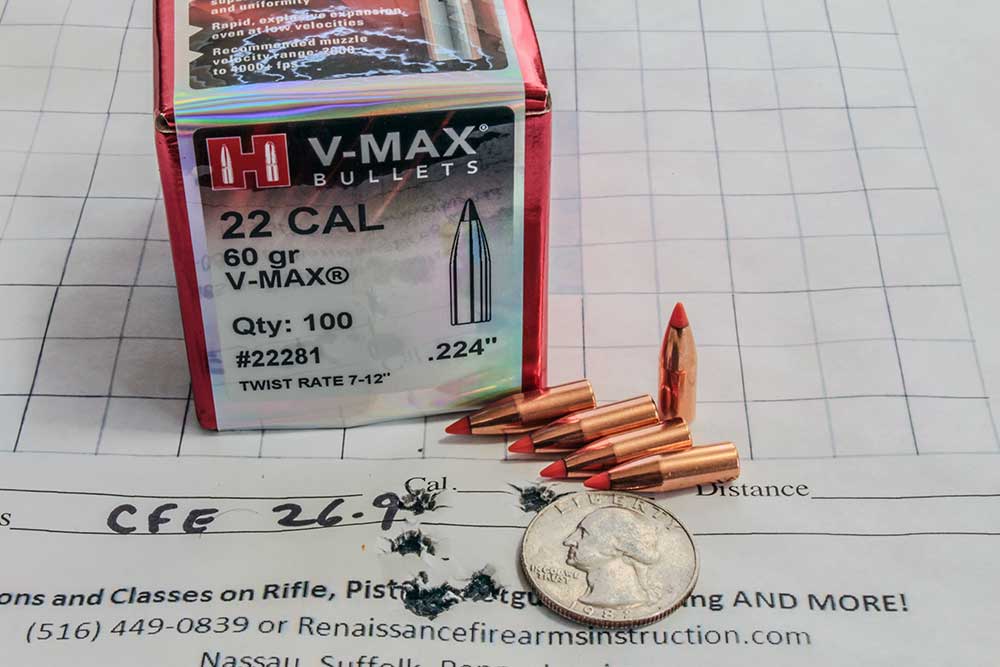
Our takeaway for the Valkyrie handloading project is that this is a very viable and interesting round for handloaders. As far as potential uses go, outside of target-shooting, I personally wouldn't use a light bullet for deer-sized game, but people certainly have done it over the years, and the 224 Valkyrie would indeed make a clean kill with good shot placement. Picking the rifle up after this development, I quickly realized how valuable it would be at slinging V-Max bullets at prairie dogs and groundhogs.
Turning it over to the target side of things; the 88-grain ELD MATCH bullet will indeed stabilize in a 1:7-inch twist barrel, but I now understand the need for the new 1:6.5-inch twist barrels that are hitting the market, as of this writing. In the future, I may do some work with one to see what the best-possible accuracy and range can be had out of this cartridge.
Only time will tell what our 224 Valkyrie handloads will do. However, one thing is for sure: The AR-15 platform is incredibly versatile, and rounds like the 224 Valkyrie only enhance its potential. To see what your rifle can really do, pick up one of these uppers, dust off your reloading press and see what your gun needs to reach its full potential.
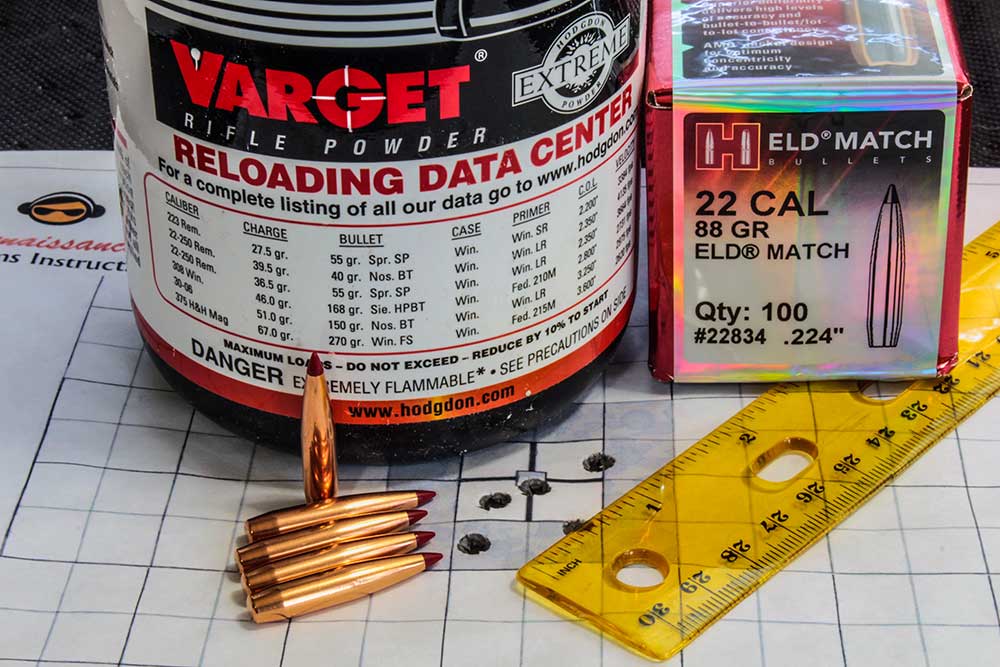
All technical data in this article, especially for handloading, reflect the limited experience of the author using specific tools, products, equipment and components under specific conditions and circumstances not necessarily reported in the article and over which the National Rifle Association (NRA) has no control. The data have not otherwise been tested or verified by the NRA. The NRA, its agents, officers and employees accept no responsibility for the results obtained by persons using such data and disclaim all liability for any consequential injuries or damages.












